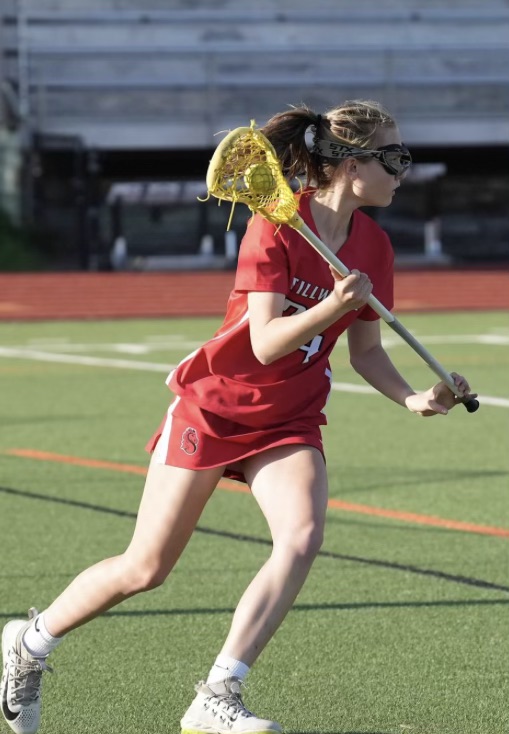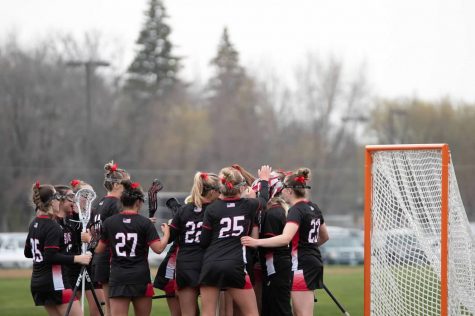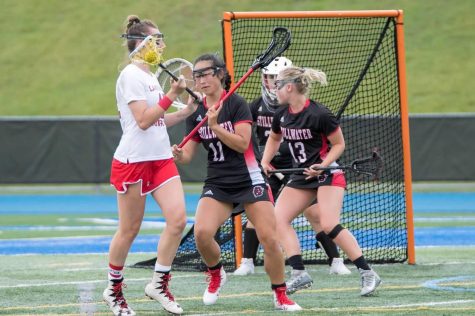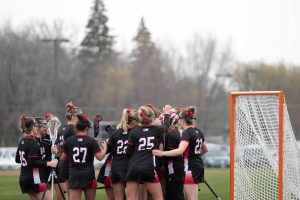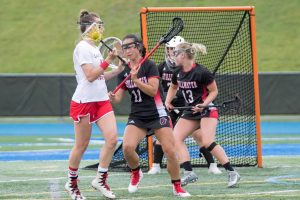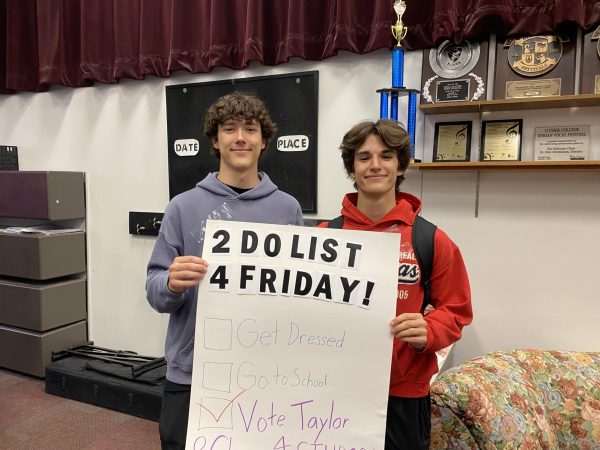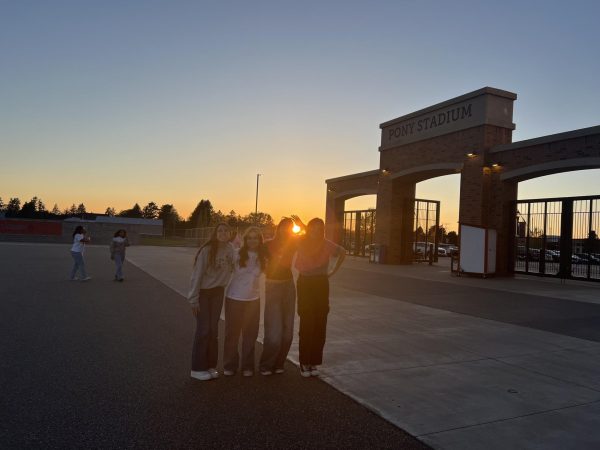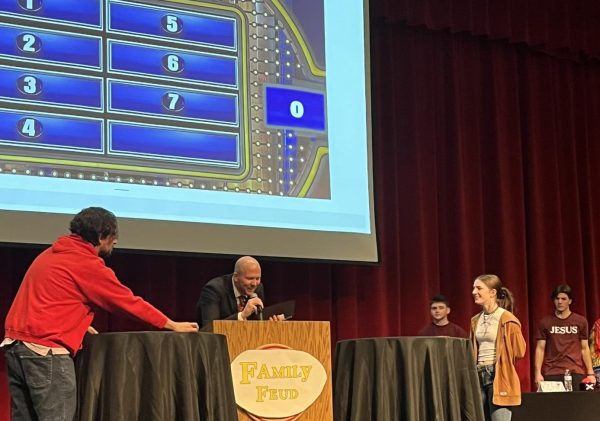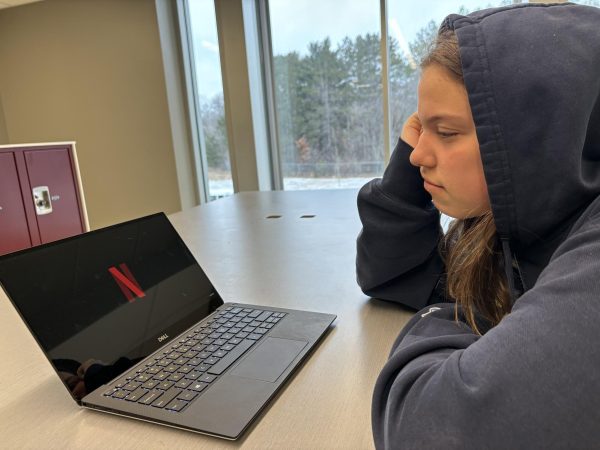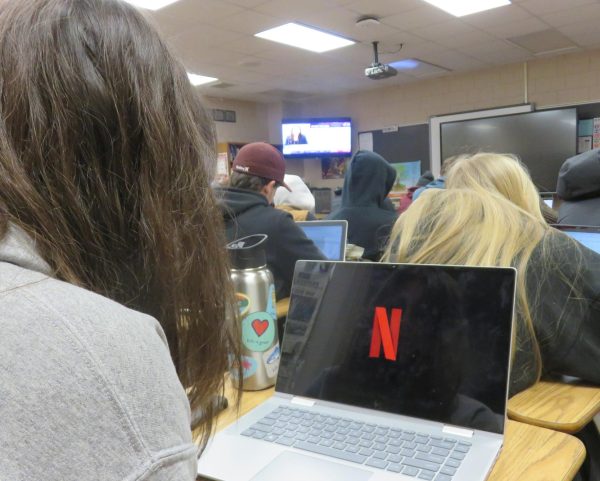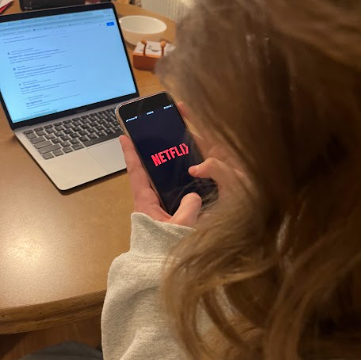Shift in sports culture challenges student athletes
Photo submitted by Gillian Carlson
Junior Gillian Carlson gets ready to pass to a teammate during a lacrosse game. She is a dedicated athlete and plays on both a school and club team.
April 19, 2023
In recent years, there has been a massive shift in sports culture and it has had a big impact on student-athletes. Specifically, high school sports have intensified and athletes have shifted to only playing for success.
One of the major results of this shift in sports culture is that high school athletic programs have become more stressful as they put added pressure on students.
“Everyone has the desire to be the best and play at the highest level, so it creates heavy competition,” Gillian Carlson junior lacrosse player said.
Teammates have to be competitive with each other to play their best and make varsity teams while also being competitive on game days to win and make their coaches and schools proud.
Athletes start on their sports journey by finding their passion and love for a sport. It takes a lot of dedication and strength to continue playing in the high school ranks. Now, some students have lost their love for their sport and continue to play only to win.
“Although I love playing and having fun with my friends, sometimes it can be stressful and tiring. A factor that impacts this is how I feel pressured to always play my best or else the whole team could be affected,” Carlson added.
Nobody wants to be the person to let their team down, especially in high school when athletes go to school and socialize with their teammates.
“In my experience when an athlete loses their passion for their sport, it’s typically because of their relationship with the team and coach. Some current programs where individuals aren’t valued and trust and teamwork aren’t encouraged are causing students to lose interest in their sport, but I would hope that there are more helping to fuel the students’ passion by building strong relationships and teamwork,” Chevals coach Mckenzie Coyle said.
In the past few years, the “more is better” mentality has taken over youth sports leading kids to be overworked and drained. Young kids are traveling for their sports, joining club teams, getting private coaching lessons and more to get ahead and play the best in their sports.
“The main issue I’d like to see changed is the emphasis on winning being the end all be all. I’m hoping to see a shift from the winning mindset towards striving to be the best each athlete and team can be regardless of the final outcome,” Coyle said, sharing her experience with recent problems in sports.
Student-athletes report that success impacts how they feel about their sports. The amount of anger, stress, sadness and anxiety they feel at practices and games determines their outlook on themselves as a person and athlete. It also impacts whether or not they continue to play.
Carlson said that being successful does impact how much she likes playing lacrosse. She added, “If I’m having an off day, then I’m most likely not having as much fun as I would if I was playing better.”
It has become clear that high school sports should shift in the direction of taking better care of athletes. Carlson believes that high school sports should “build more team values” and she is happy that on her team the girls “lift each other up and encourage each other, which is an important factor in keeping the energy positive and fun”.
“The main issue I’d like to see changed is the emphasis on winning being the end all be all. I’m hoping to see a shift from the winning mindset towards striving to be the best each athlete and team can be regardless of the final outcome.”
— Mickinze Coyal
Athletic programs should shift to focus on a “student-first” philosophy and build programs around self-controlled issues that have an impact on student success. Pressure teens face in their day-to-day lives carries with them to their sports practice. With the recent increase in sports intensity, even more pressure is added as athletes walk into practice. For some, it can be helpful to relieve stress as they focus only on their sport for a few hours, but for others, it can be hard to separate the two and a reminder of everything weighing down on them.
“I encourage all of my athletes to come to me when they are experiencing a problem whether it’s physical/mental health-related, team-related, stress-related, etc. From there I try to help the situation the best I can and talk about how best we can move forward,” Coyle said. This fresh outlook from younger coaches gives hope to the sports community as young athletes will hopefully feel better mentally and like they have someone to talk to about their problems.
The shift in sports culture is seen and felt by many players and coaches. The goal is to make high school sports feel fun and safe again. The high school sports community wants programs to focus on how to help students succeed in life and their sports.
“Before coaching, I assumed that the culture of each team was dependent on the coach and athletes. After coaching the dance team at Stillwater for the past two years, I’ve learned that sports culture is ever-evolving and draws from the coach, team dynamics, individuals within the team, the school, other programs at the school, and outside societal views” Coyle added.


